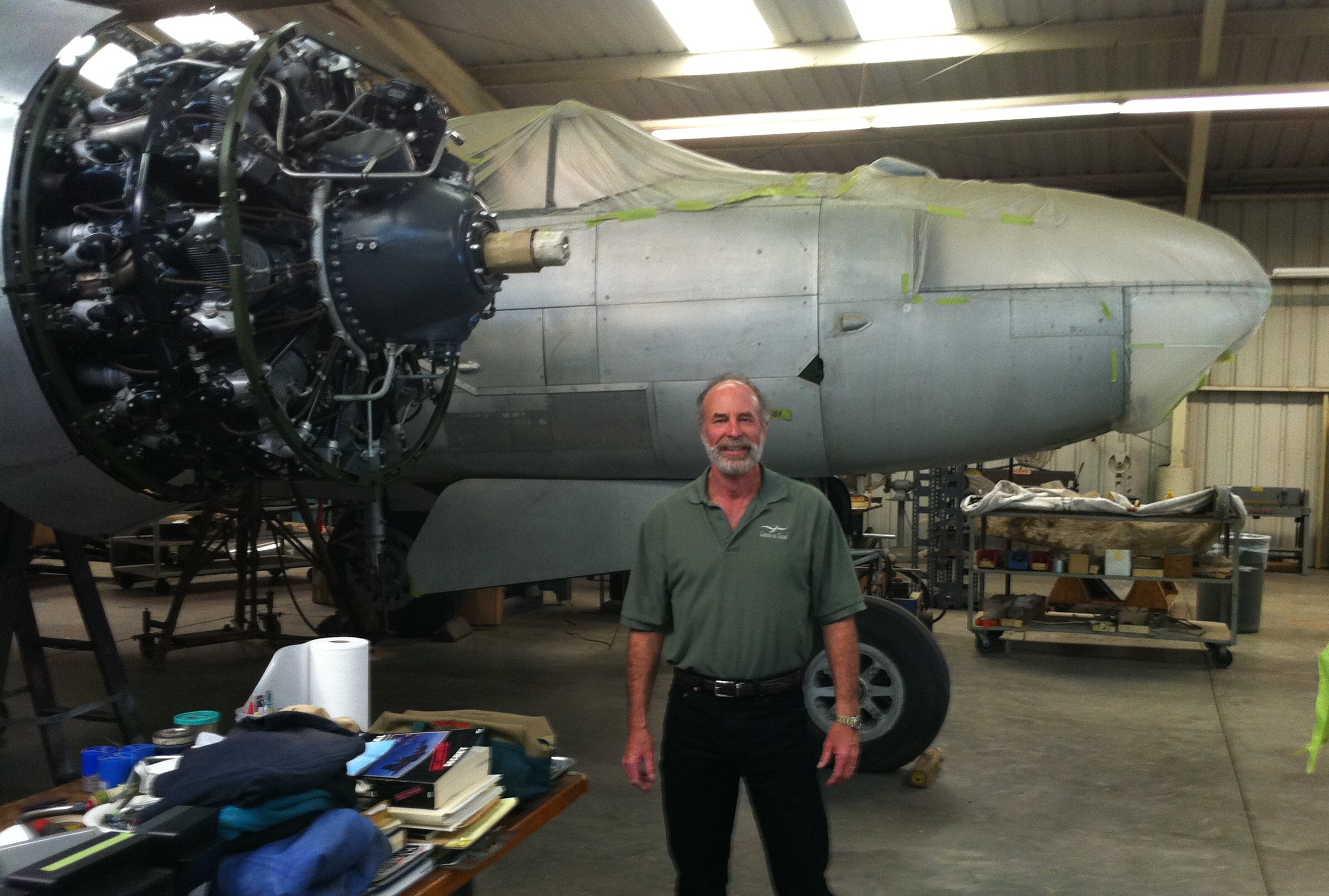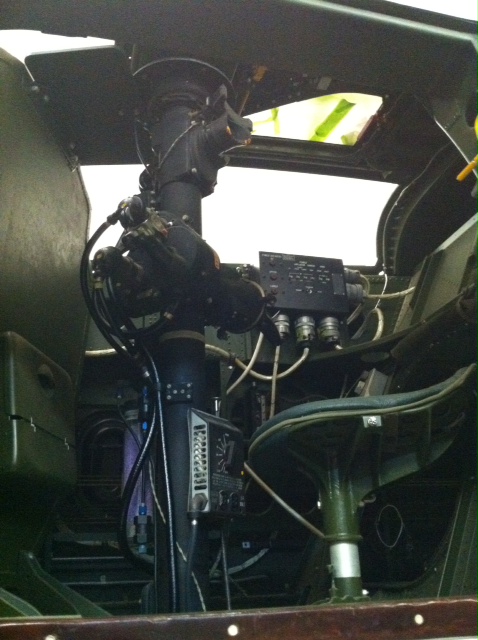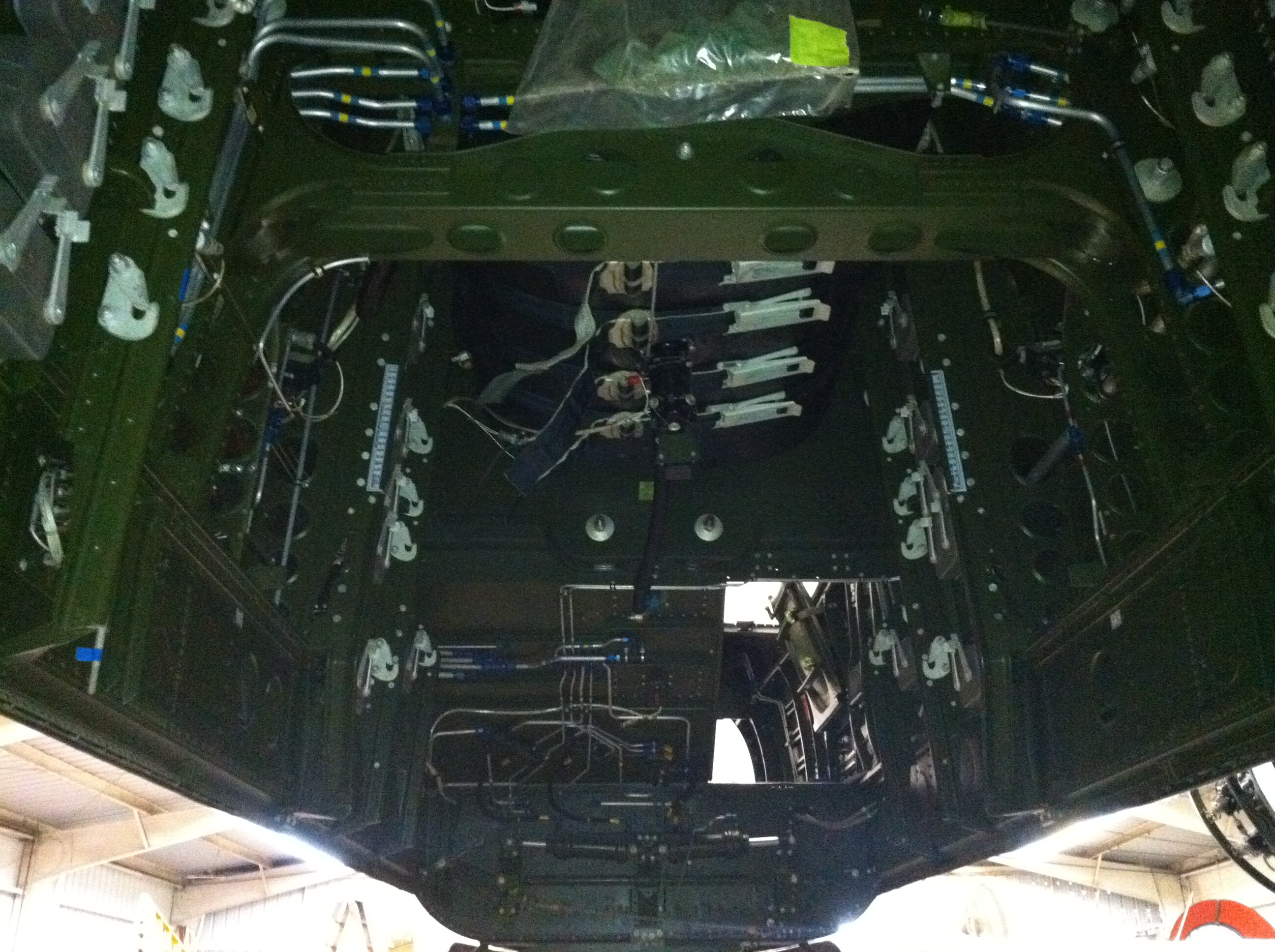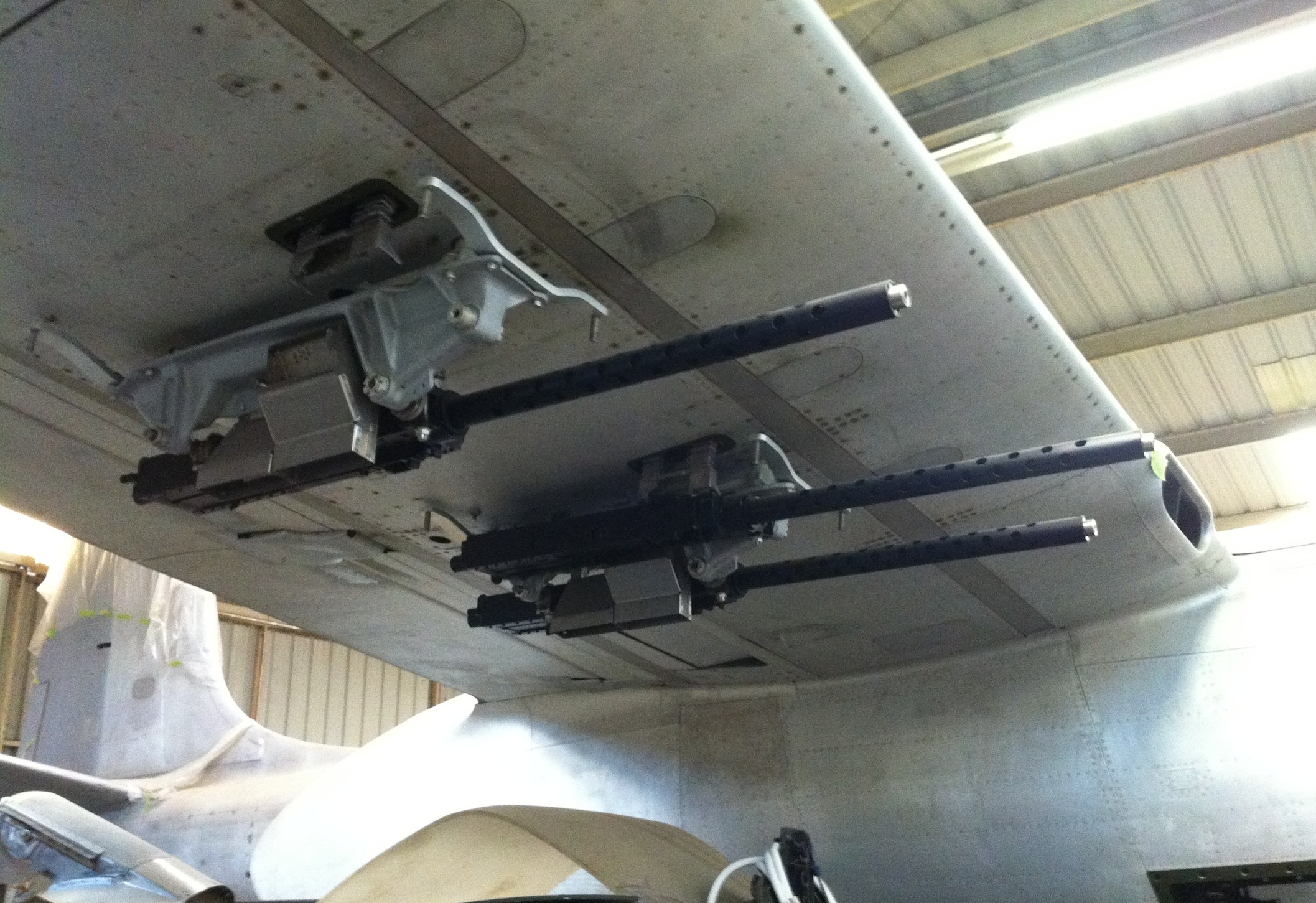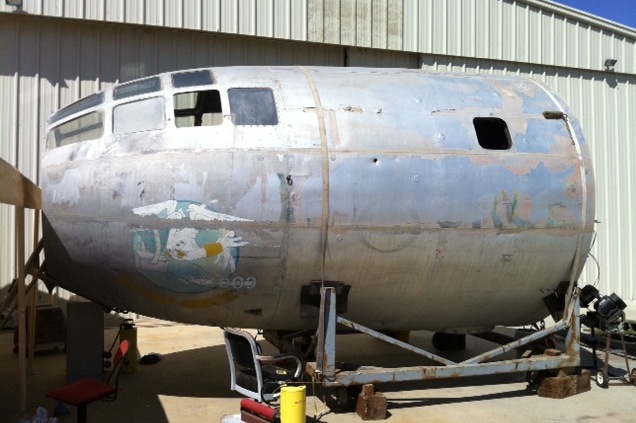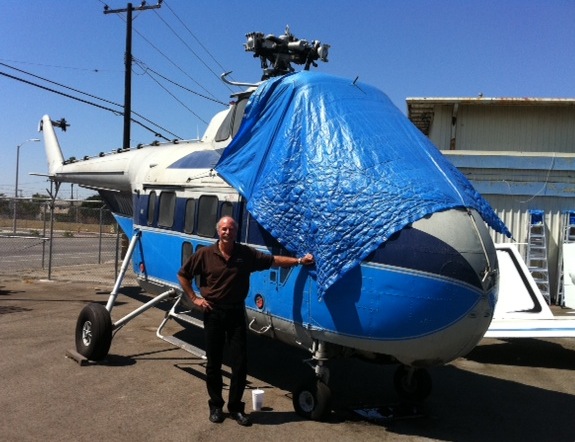After coming back from my April trip Down Under, I couldn’t imagine a cooler trip coming up anytime soon. Boy, was I in for a surprise!
In early May, I got a call from my good friend Tony Bianchi that one of his other clients, Peter Livanos (a Greek shipping magnate), was going to dispose of his beautifully restored C-47 that had actually flown in D-Day and the Battle of the Bulge. The C-47 is a military version of the famous civilian DC-3 and was used to drop paratroopers and supplies in WWII.
Peter and I had seen each others projects at Tony’s place over the years but had never met. The amount of money he had in the plane was far more than the market would bear so he decided to donate it to either the USAF Museum or the Smithsonian. Tony interceded and told him that I would keep it flying and consider selling it to me for a fraction of what he had in it. Peter was aware of what I had been creating over the years and said if I wanted the plane, he would sell it to me and me only. It was not for sale to anyone else and that if I didn’t want it, it would be donated. Tony and I continued discussing the possibility while I wrapped my head around what I was getting into. In early July I headed over to England to “kick the tires,” while rounding up a crew in case I decided to purchase the plane.
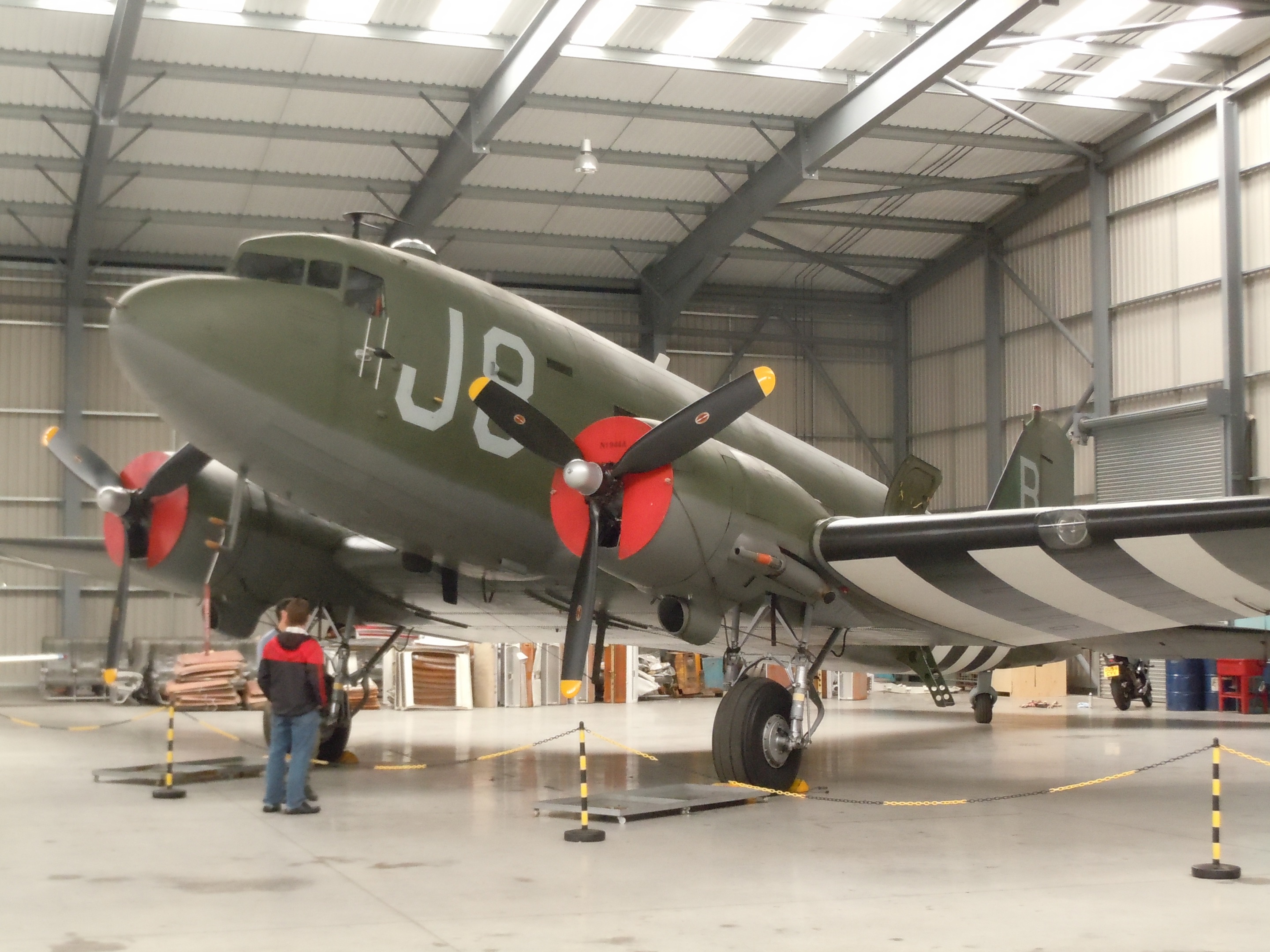
First Sight!
After arriving, Tony and I drove out to RAF Kemble about two hours away to see the plane. It was in great shape and had just come back from the D-Day invasion celebrations in France. Two of my mechanics, Andy and Wayne, were on stand-by in Florida so I called to tell them to head over so we could inspect the plane further. I had also contacted Glen Moss, a Florida DC-3 pilot before I left. He had recently flown across the pond in a twin-Cessna and was still in Europe. He agreed to fly back with us for expenses so I picked him up at Heathrow. It was the weekend of the Flying Legends Airshow so Glen and I attended while waiting for my guys to show up a few days later after rounding up tools and items that we’d need.
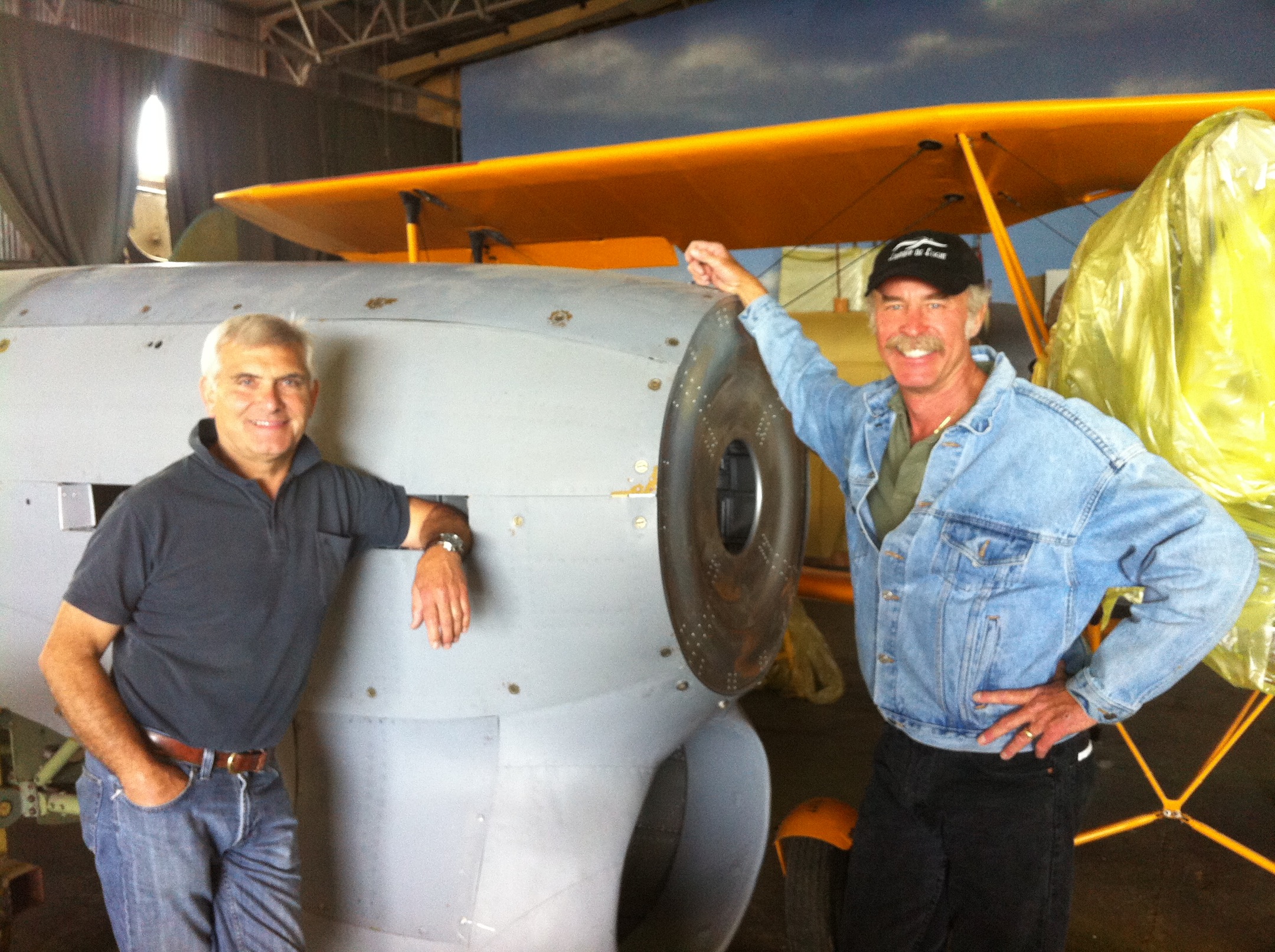
With Tony in front of my Tempest V project
FAA check-pilot Verne Jobst agreed to come on the trip and, without him, it never would have happened. I had know Verne over the years while competing in aerobatics and from EAA. He had given me my B-17 type-rating and kept me current over the years giving me re-currency rides in my Ford Tri-motor, B-25, and Grumman TBM. He was retired from United and had 8000 hours in DC-3’s. I had never flown a DC-3 and did not have the type-rating required, let alone an Instrument Rating, which was now required to get typed. The trip would have to be made VFR (visual flight rules), or basically flying out of the clouds in good weather.
Once my guys showed up, we had Peter’s chief pilot run up the plane for us and began to seriously inspect the plane. The last thing I wanted was a big broken down airplane in a foreign country! We found a number of small issues and one or two major ones that we fixed. During this time, Verne was on stand-by to come over while we made several trips back and forth to Tony’s shop.
On one trip, we got a bit lost and I noticed the name of a town that sounded familiar. It was where my friend Uri Geller lived. I pulled over, called Uri, and he invited us over to his home! Uri is best known for his psychic abilities, spoon-bending, and a TV show called The next Uri Geller. He surprised my guys when he picked up a spoon, began rubbing it with one finger, and it started to bend. He then proceeded to blow them away when he quit rubbing it, held it up . . . and IT KEPT BENDING!
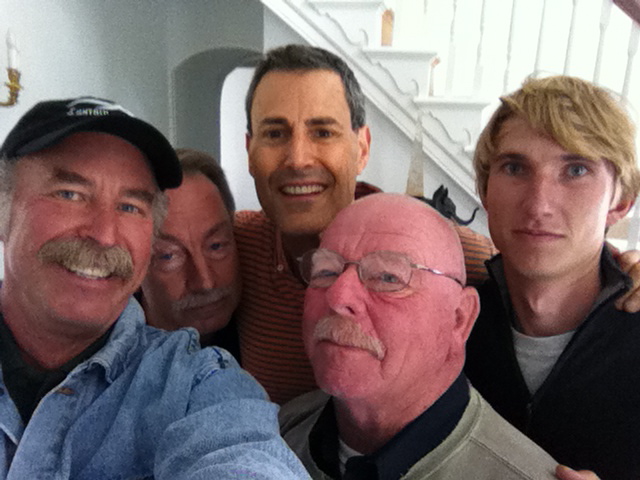
Kermit, Andy, Uri, Wayne, and Glen
After a longer than expected inspection, we were happy with the airplane and I pulled the trigger on the purchase. Unfortunately, the closing was delayed for five days because Peter’s agent could not get over from Greece right way. We used the time to begin prepping the airplane and I told Verne to head on over.
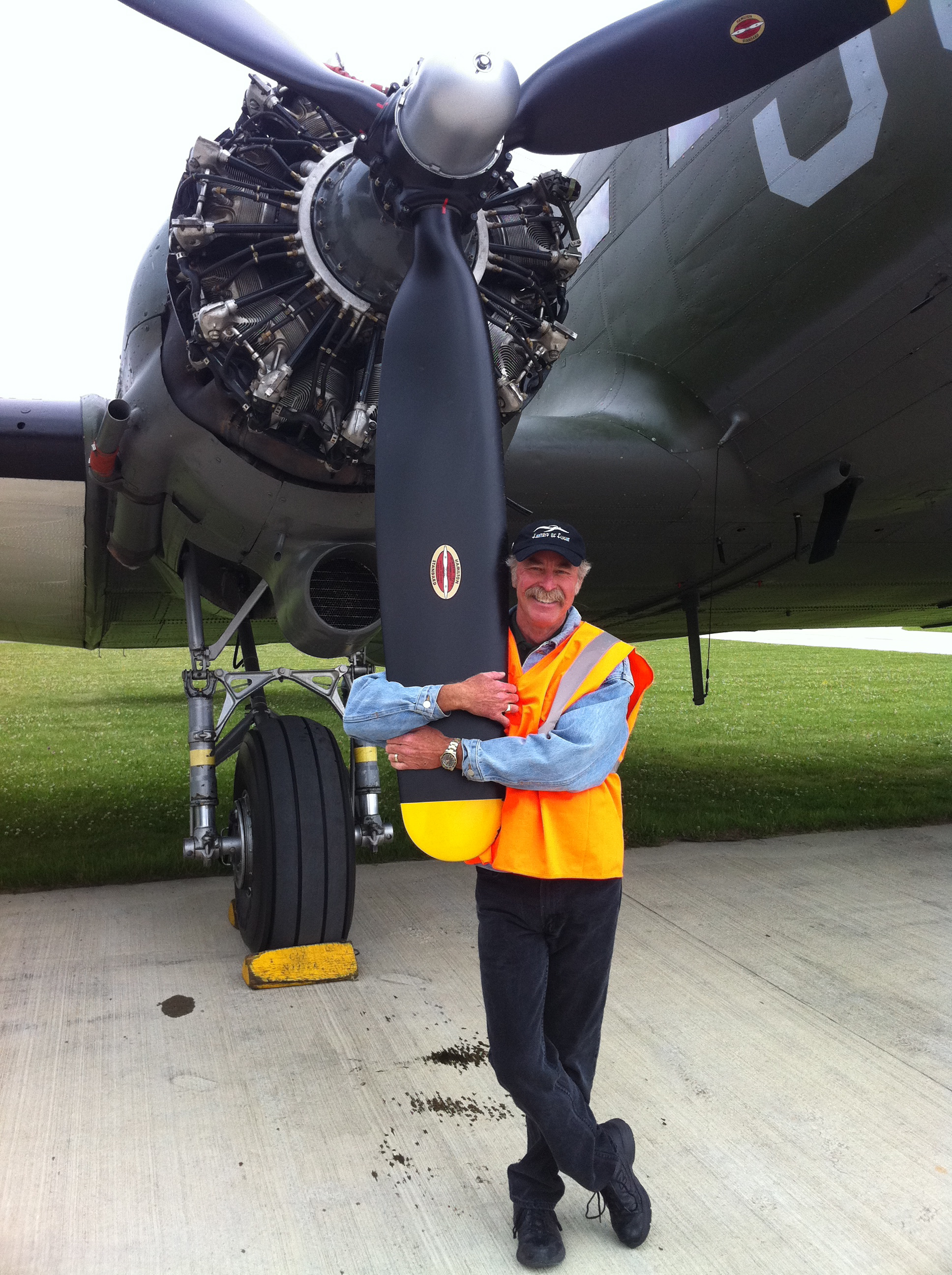
I pull the trigger . . . and agree to purchase the plane!
Another cool aspect of acquiring the plane was that Peter Livanos had a book commissioned about it! It’s called Legend and was written by Philip Kaplan. Phil came out to the airfield and gave me an autographed copy. I ordered another five for the whole crew, with the intent of getting them postmarked at each stop on the way home as I had done when we brought my Short Sunderland Flying Boat across in 1993.
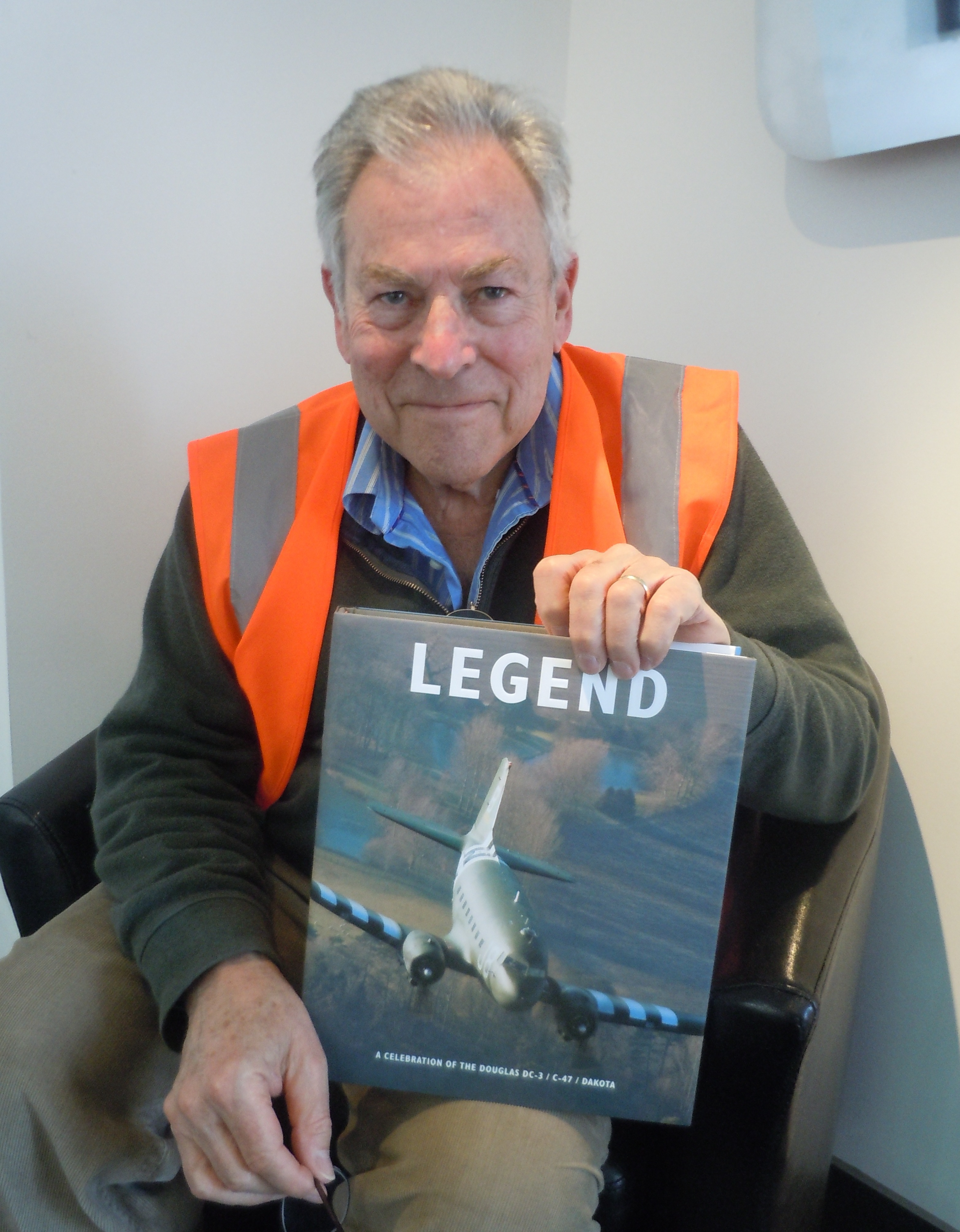
Author Phillip Kaplan and his book Legend!
Another delay that took five days to sort out was the US registration. Once I had purchased the plane, I found out it was illegal to fly it on the temporary pink-slip registration. I HAD TO HAVE the official FAA white copy from Oklahoma City. Without it, the airplane could be impounded at the US border! After overnighting the paper work to the FAA and several phone calls we received a fax copy that allowed us to fly it into the US.
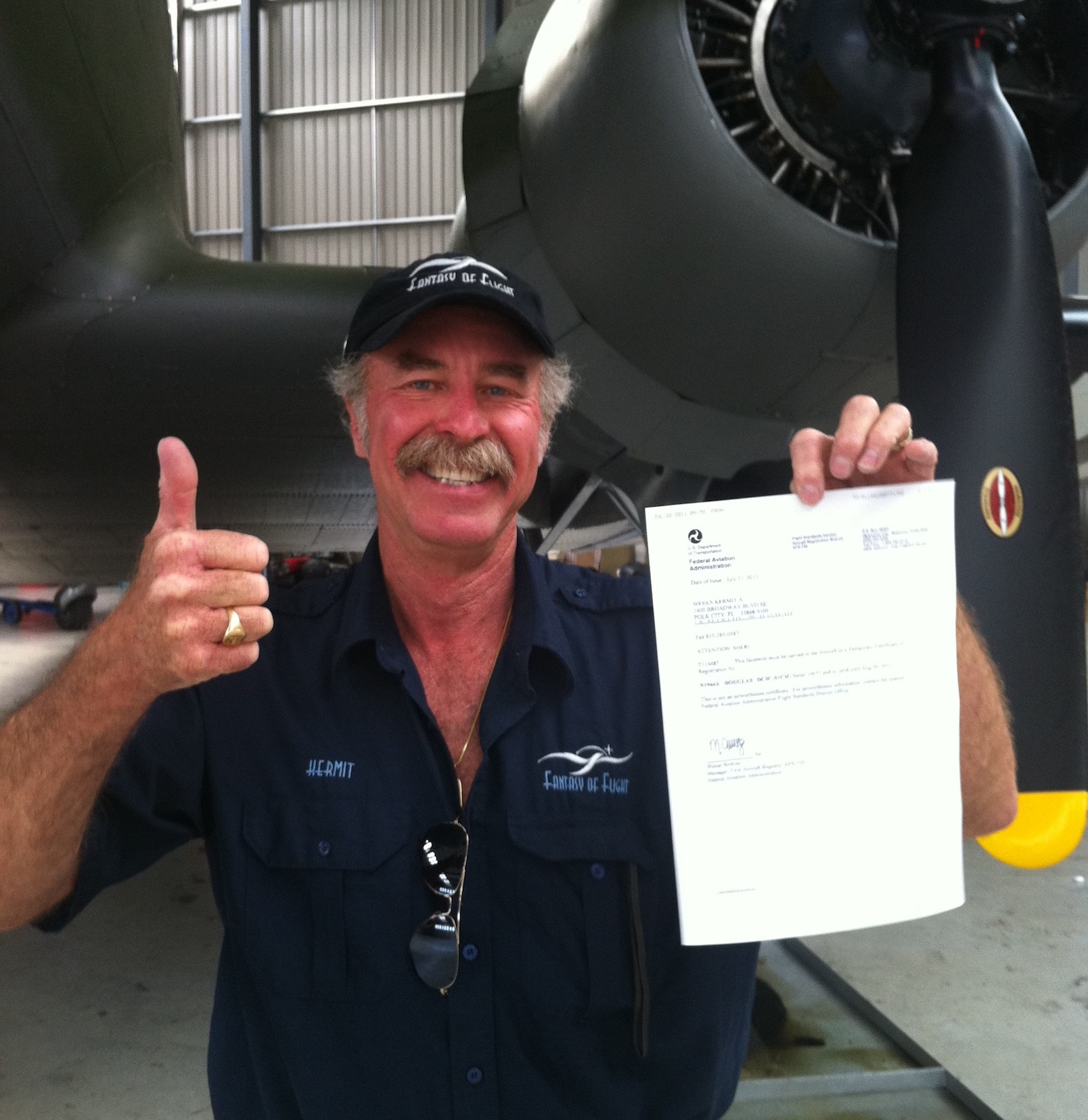
Official US Registration in Hand!
While we waited for Verne to show up, we took time out to celebrate my July 14th Birthday . . . And my new Birthday Present!
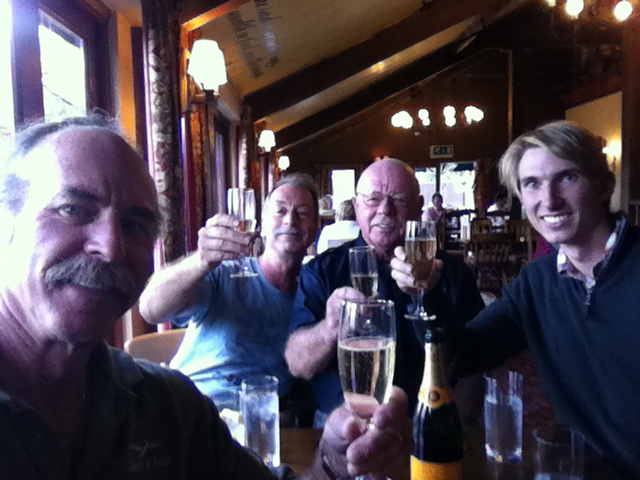
Happy Birthday Kermit!
Soon after, I picked Verne up at Heathrow and we headed back to Kemble to show him the plane. Knowing he would be jet lagged, we let him get a good nights sleep and the next day flew the plane for the first time! It flew great and our flight included feathering each engine and three landings for each of us to get current and be legal in the plane. Photographer Graham Wasey was on hand and recorded the event with some great shots!
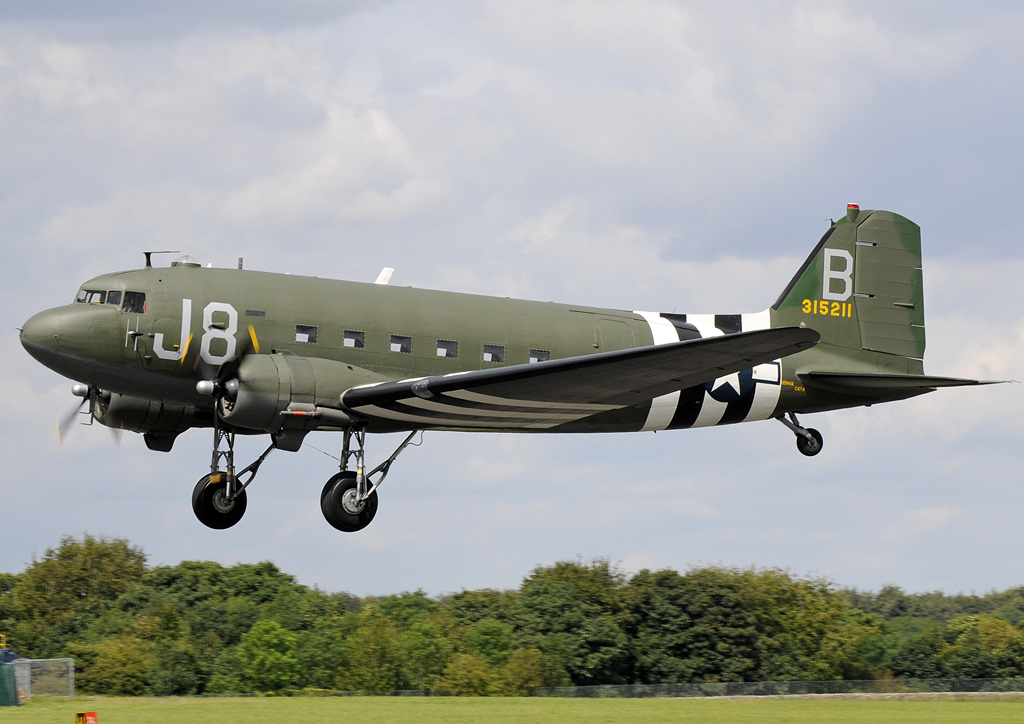
First Flight!
Satisfied the plane was running great, we made the decision to head to Wick, Scotland the next day and began loading the airplane for the trip. The weather looked good but appeared to be moving into our destination the following day. We figured the first leg would be over land, it would be a great shake-down flight, and there would be plenty of airfields to land at should we have problem.
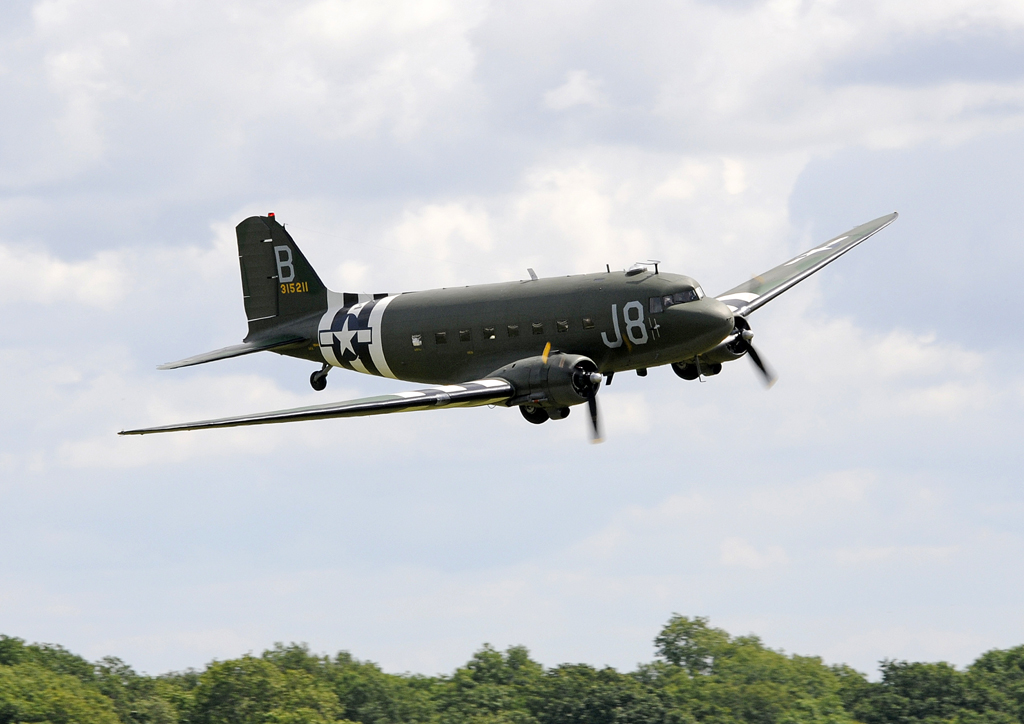
One last fly-by before heading to Scotland!
The trip up was four hours and was a great confidence builder in the plane. We were only burning 84 gallons of fuel total per hour and and less that a quart of oil per engine per hour. This gave us about 9 hours of fuel range.
As it turned out, our evaluation of the weather was correct and we got stuck in Scotland for three days. We still had a lot preparation to do that included installing an HF radio for the crossing and getting checked out on the survival gear we rented.
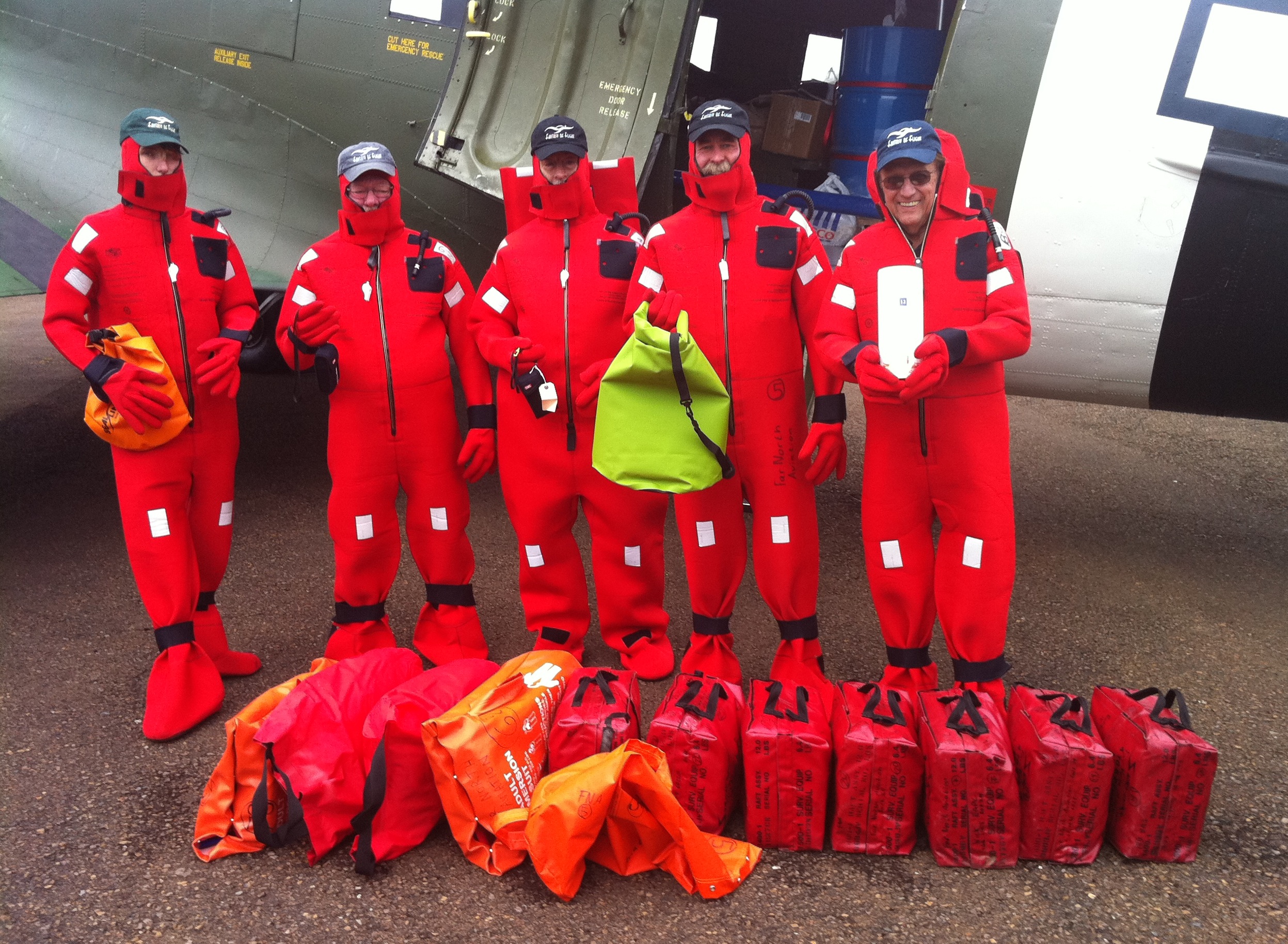
Immersion suits, life rafts, and survival gear that included a bottle of Scotch!
After two days of bad weather and preparing for the leg to Iceland, it suddenly turned gorgeous. Unfortunately, the weather to Iceland was not so nice so we went off to tour the Scottish countryside. Our first stop was a little town called John O’Groats, which is the northernmost point on the British Island. They had a place to take your picture with different mileages. It was then that it hit us the magnitude of the journey were were about to embark up. Our destination was Oshkosh, WI, where I had arranged to put the plane in the EAA Museum while I figured out where I was going to find room for it at Fantasy of Flight. It was 4000 miles away!
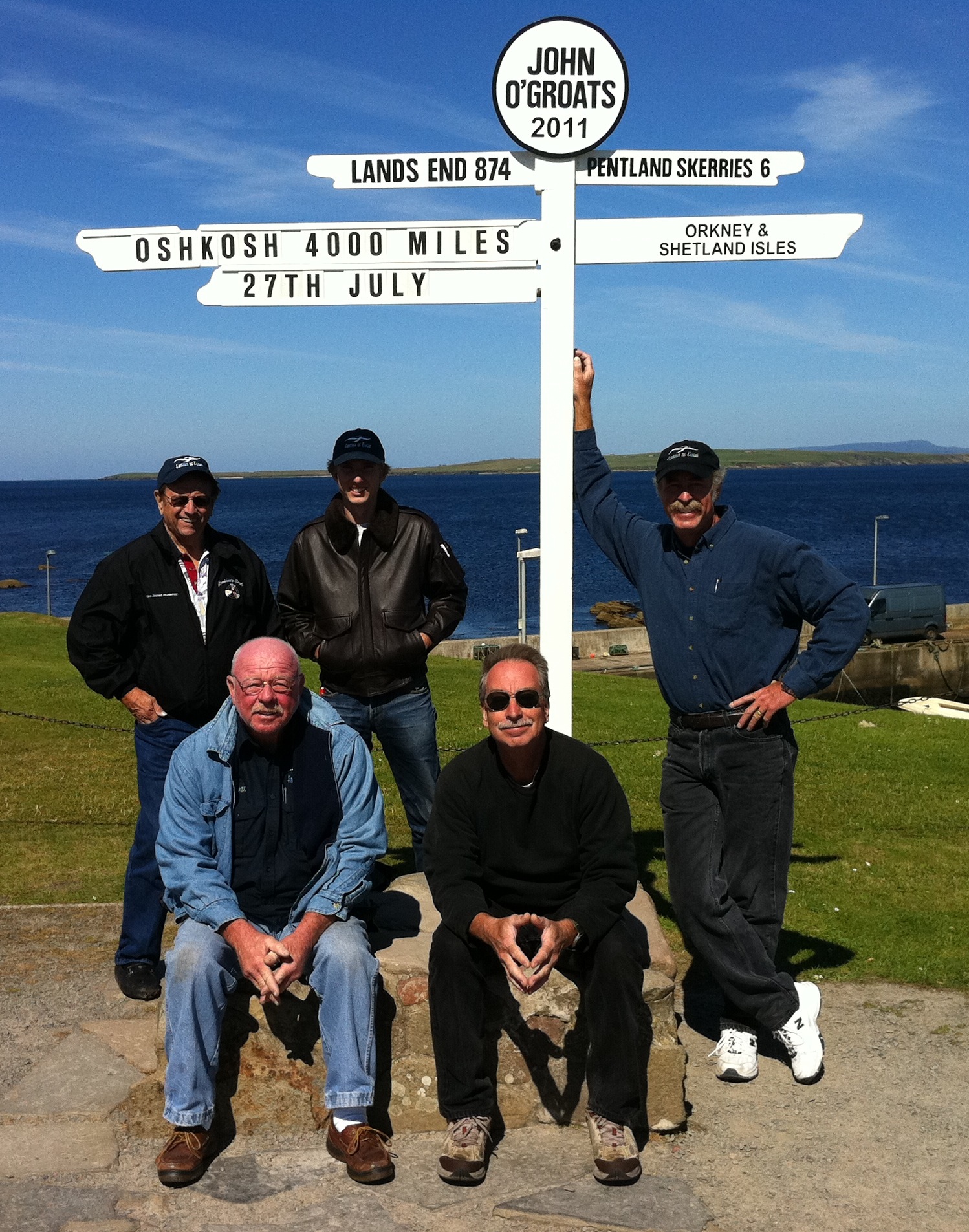
Oh my God . . . what have we gotten ourselves into!
The next day looked better so we checked out of our hotel, turned in the car, and loaded up the plane. The morning weather was a bit iffy but improving so we decided to go.
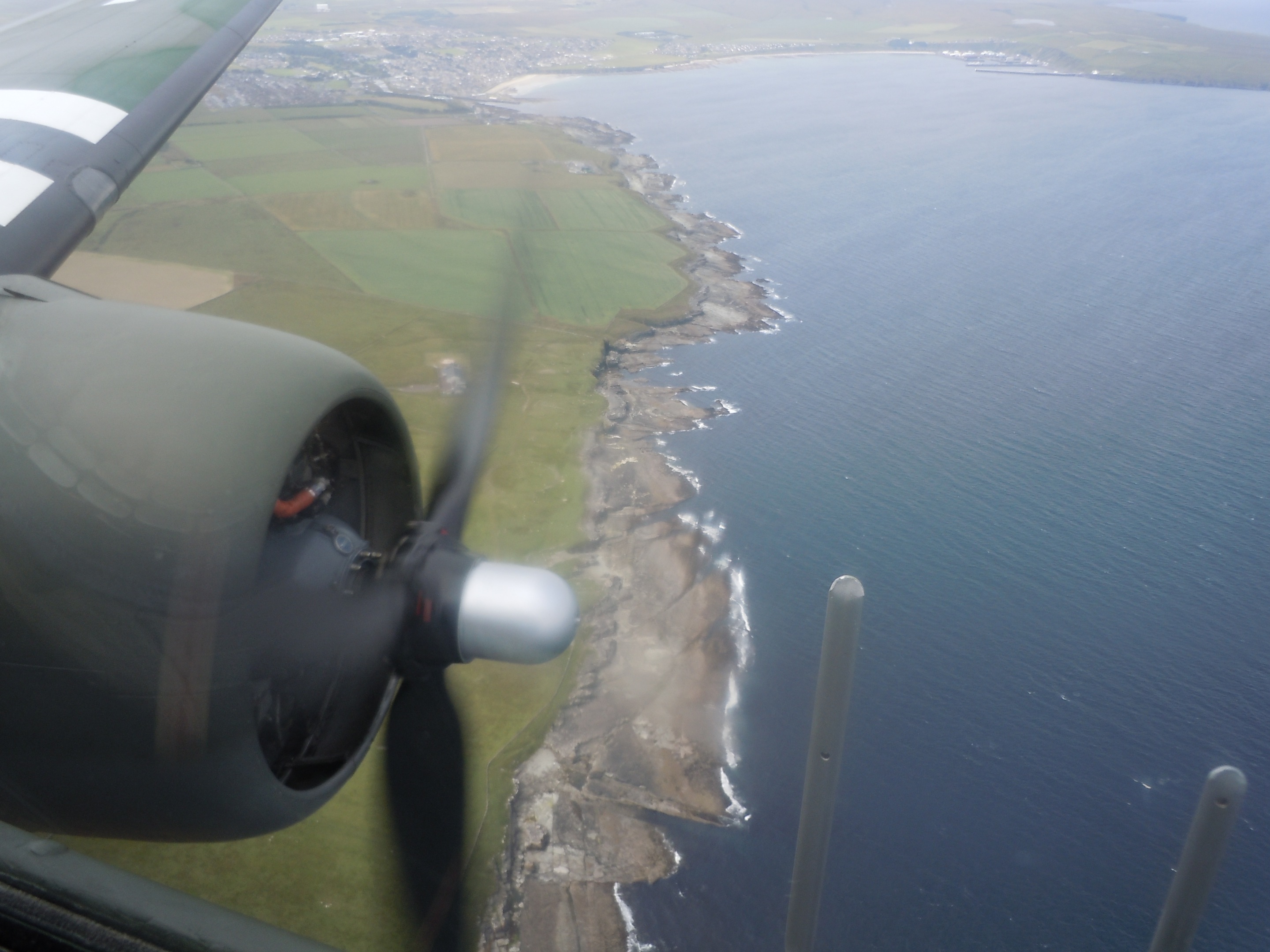
Leaving the Scottish Coast!
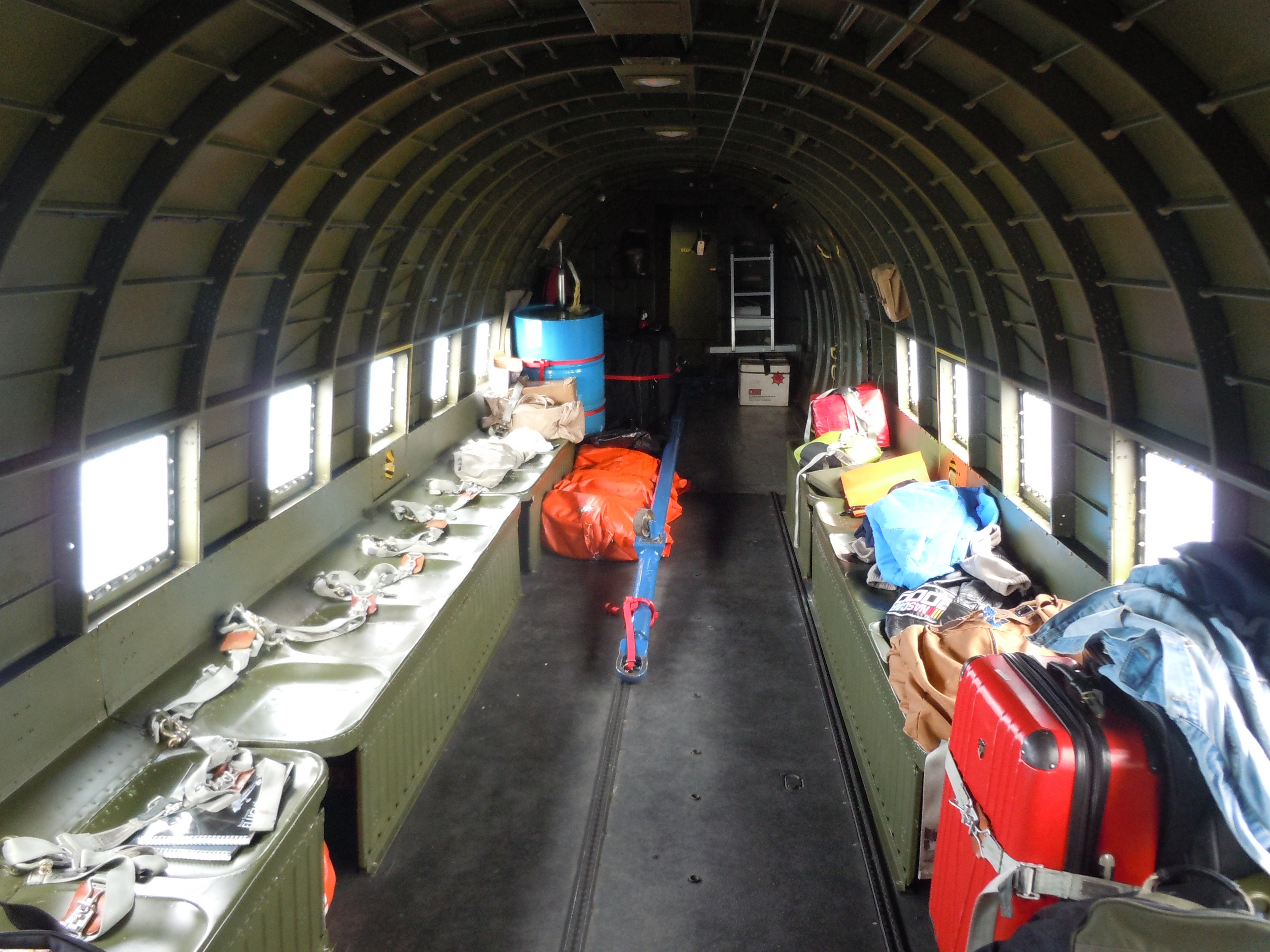
Back of the plane with original seats heading to Iceland
The weather was great until we got to Iceland, where we had to dodge some clouds to get into Rejkjavik. The trip up was 5 1/2 hours. We got stuck there the next day waiting for some weather to go through.
I had told the guys before the trip to pack a swimsuit, which got some concerned looks and comments. No, not for bobbing around in the North Atlantic in case we went down, but in case we got stuck in Iceland as I’d done on the Short Sunderland trip. Back then, we got stuck for four days because of weather over Canada and began taking in the sights. While touring around, we discovered a volcanic hot springs called the Blue Lagoon and soaked up some of the local culture. My guys were not to be disappointed when I took them there the next day!
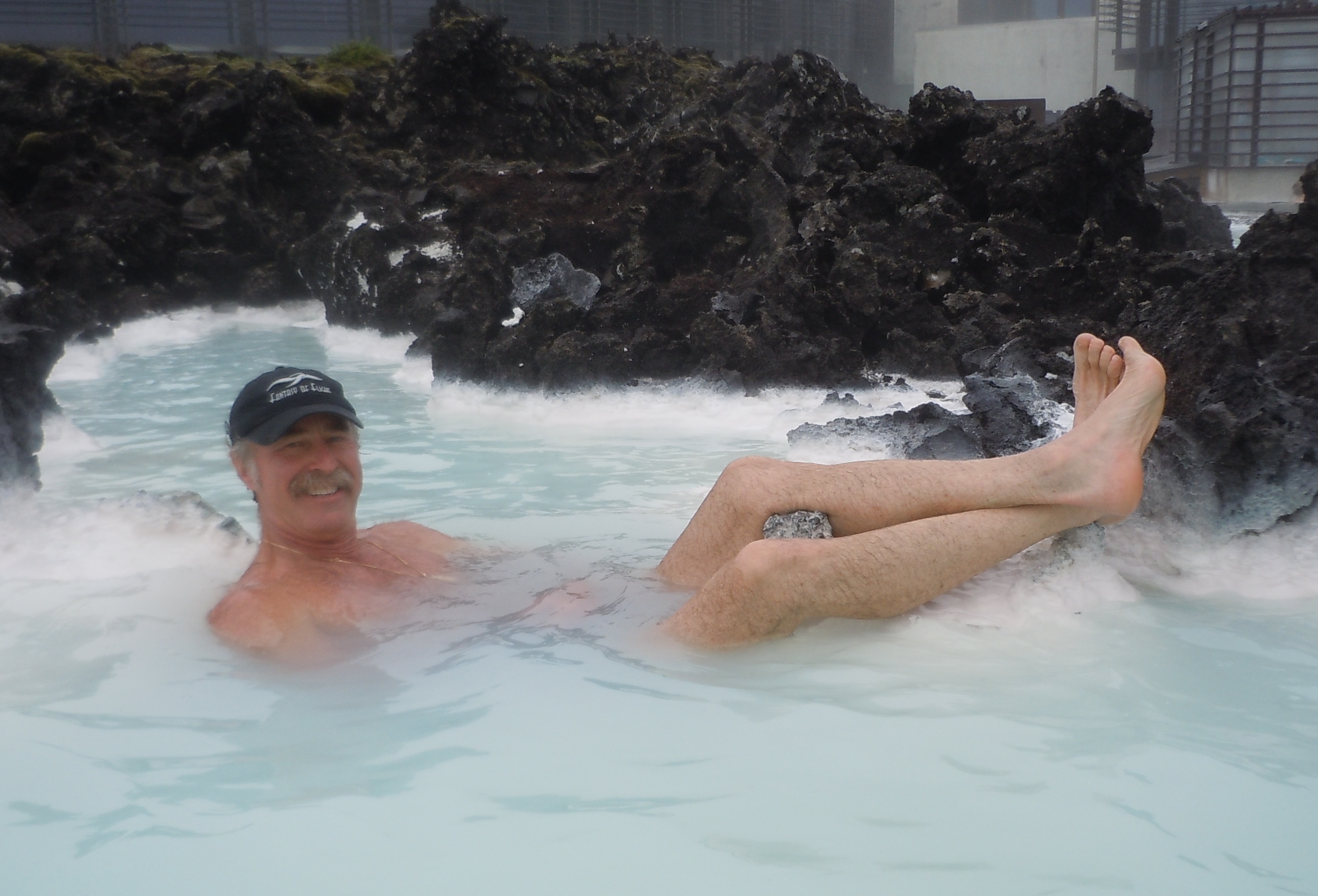
Soaking up the Icelandic Culture!
The following day, the weather improved and we left for Narsarsuaq, Greenland. Our original intent was to head to an airfield on the east side because of fuel considerations, but soon after leaving the weather looked good enough to head further south. There are not a lot of airports to choose from in Greenland and the last thing we wanted to do was run out of fuel trying to get to one because of weather. Narsarsuaq was also our most direct route home.
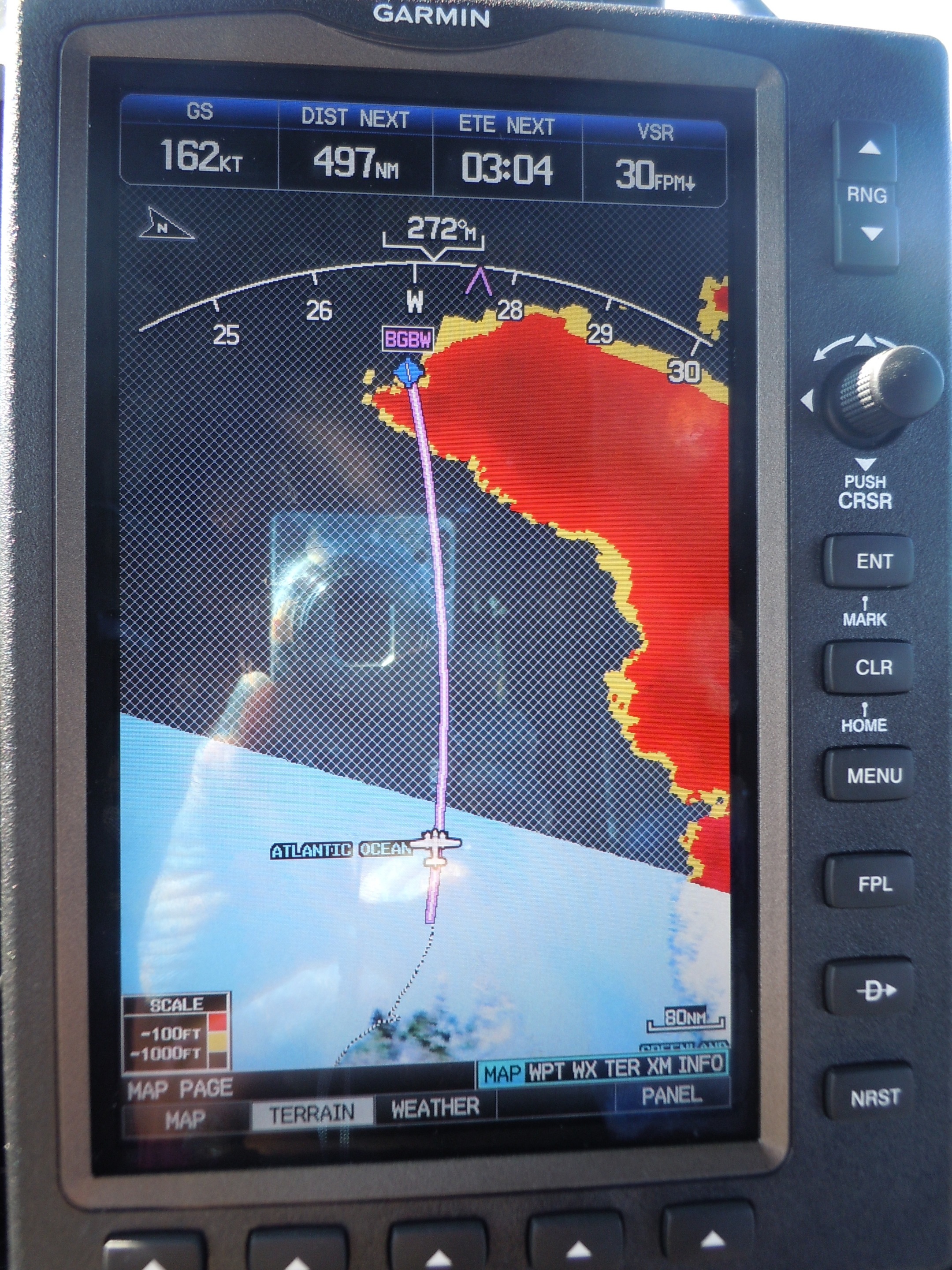
Headed to Greenland with our GPS leading the way!
The weather was gorgeous when we got to Greenland 5 hours later! We flew around to the southernmost end and cut across the mountains. The scenery was absolutely breathtaking with icepack, fjords, mountains, and glaciers! We landed at an ex-WWII airfield where, more than likely, this plane had landed on its way over to Europe in WWII.

A welcome but forbidding sight!
While the fuel prices were lower that expected, but still high ($18/gallon), the hotel accommodations and food were out of sight. $800 for three rooms and $800 for our celebratory dinner! We had arrived on a Saturday and were told the services at the airport were not “officially” open on weekends. The weather didn’t look too bad the next day so I bit the bullet and shelled out another $800 for someone to come out and “allow” us to depart!
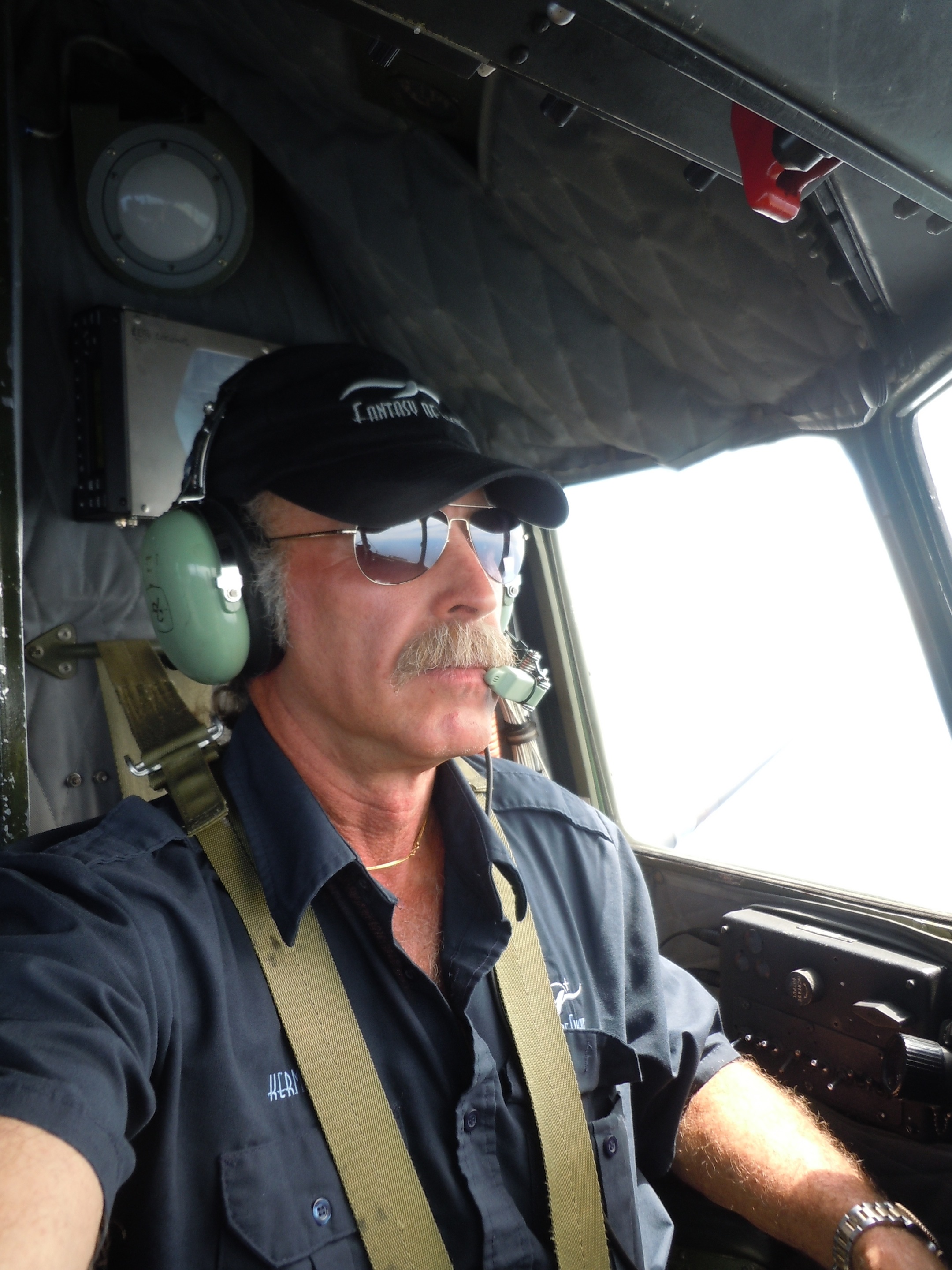
Somewhere over the Labrador Sea!
After dodging a few clouds, we arrived 5 1/2 hours later over another continent and landed at Goose Bay, Canada. We had crossed the Atlantic and celebrated out success that evening at far more reasonable prices!
The weather looked good the next day so we headed across land to pick up the St. Lawrence River with the intent of making Quebec City. As it turned out, when we got closer, the weather didn’t look too promising, so we landed just short at french-speaking Mont Joli, Quebec. This proved to be a good decision as it was bad ahead and moving our way. Hardly anyone spoke English and we began to wonder if we had somehow made a wrong turn!
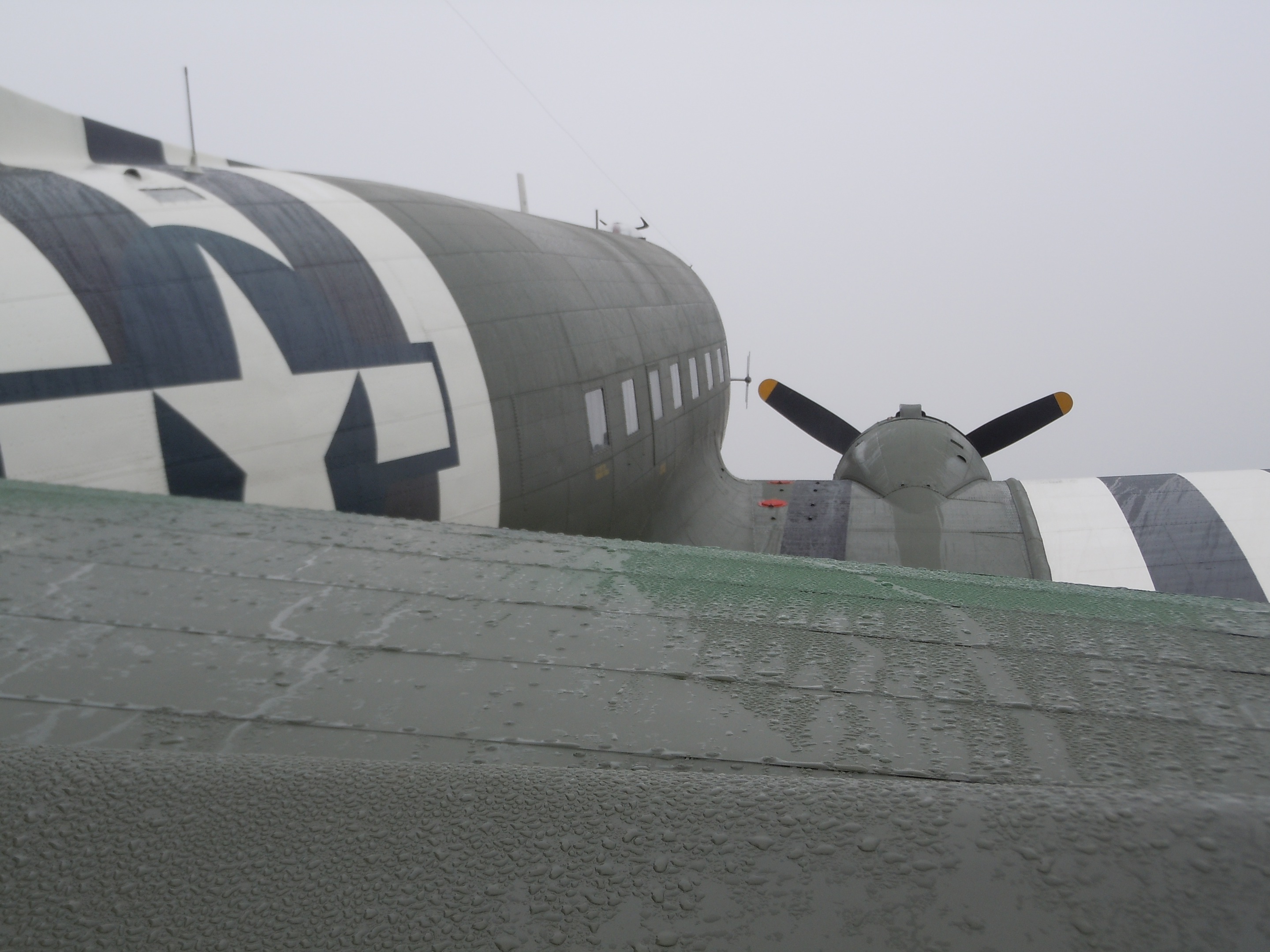
Waiting out the weather in Mont Joli!
We got stuck a day there and then headed on to Ottawa, Ontario the following day. We made it to Ottawa just as some weather was moving in from the west and spent the night.
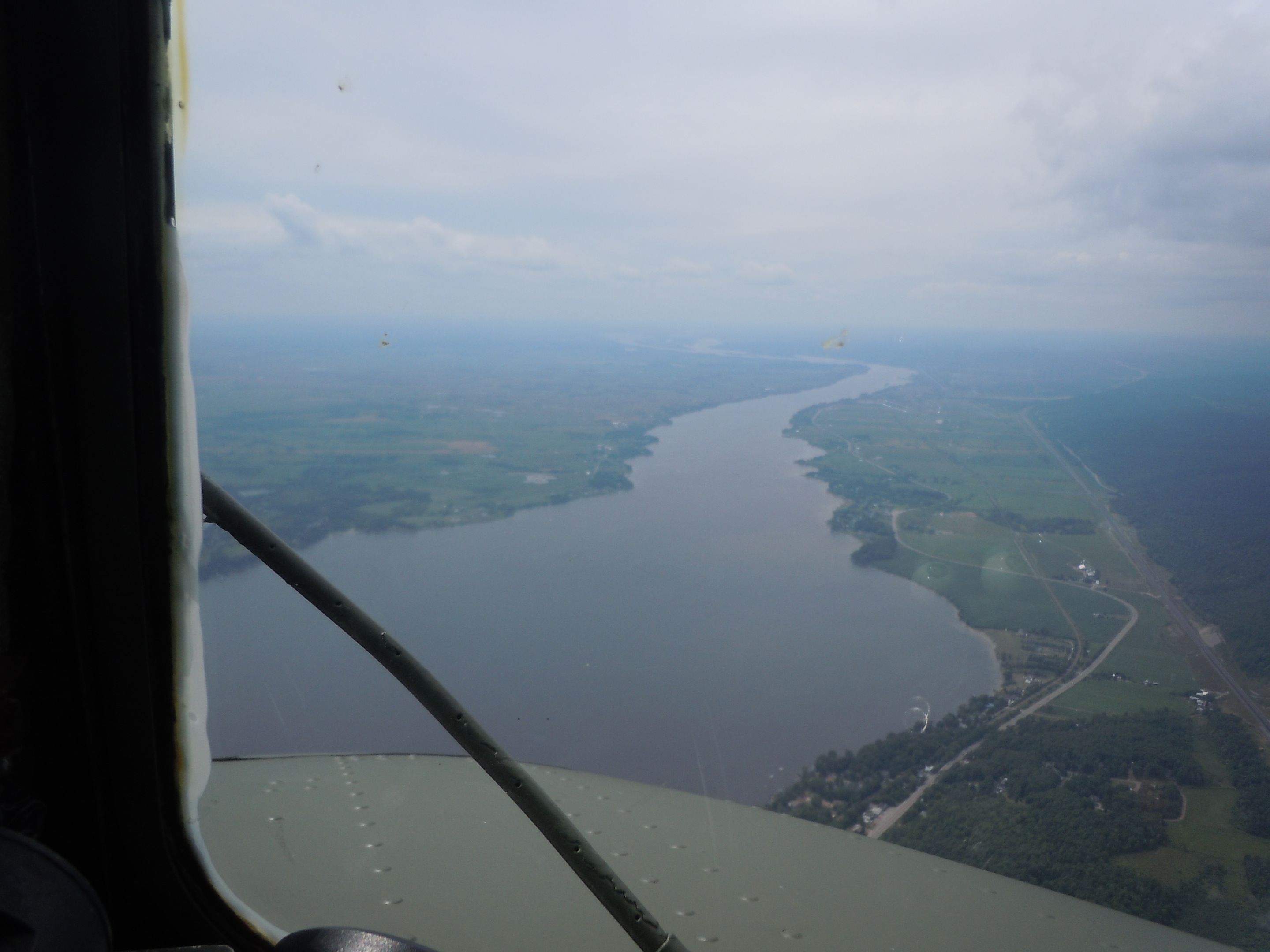
Heading down the St. Lawrence to Ottawa
The next day would turn out to be our last flying day of the trip and the weather gods came through and treated us to some beautiful weather for the final legs of our journey. We crossed the Great Lakes and landed in Green Bay, WI to clear US Customs.
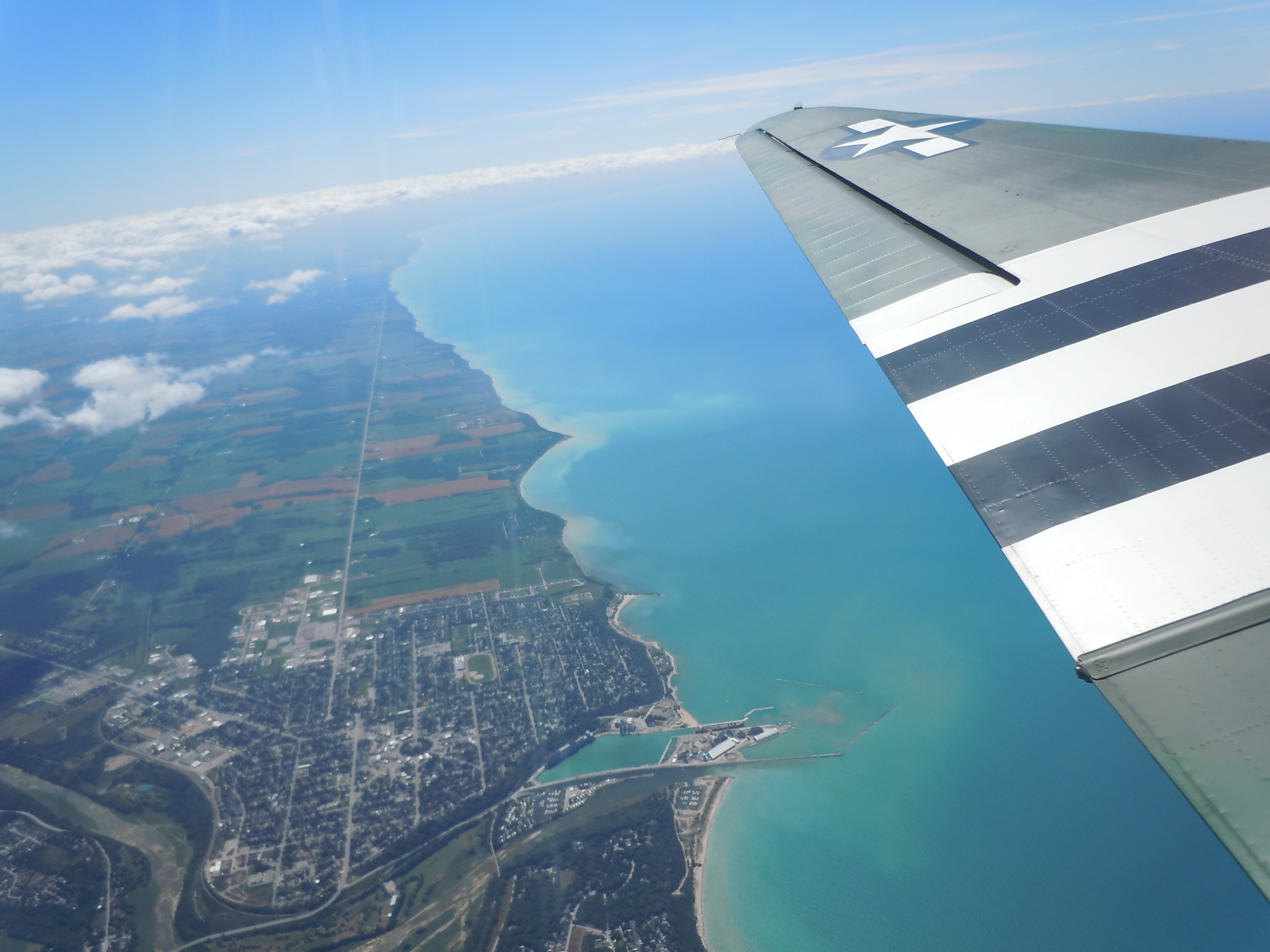
Crossing the Great Lakes!
After a short stop, we headed south for the short flight to Oshkosh. There we were greeted by many of the staff of EAA and began to celebrate our accomplishment in front of the Kermit Weeks Flight Research Hangar!
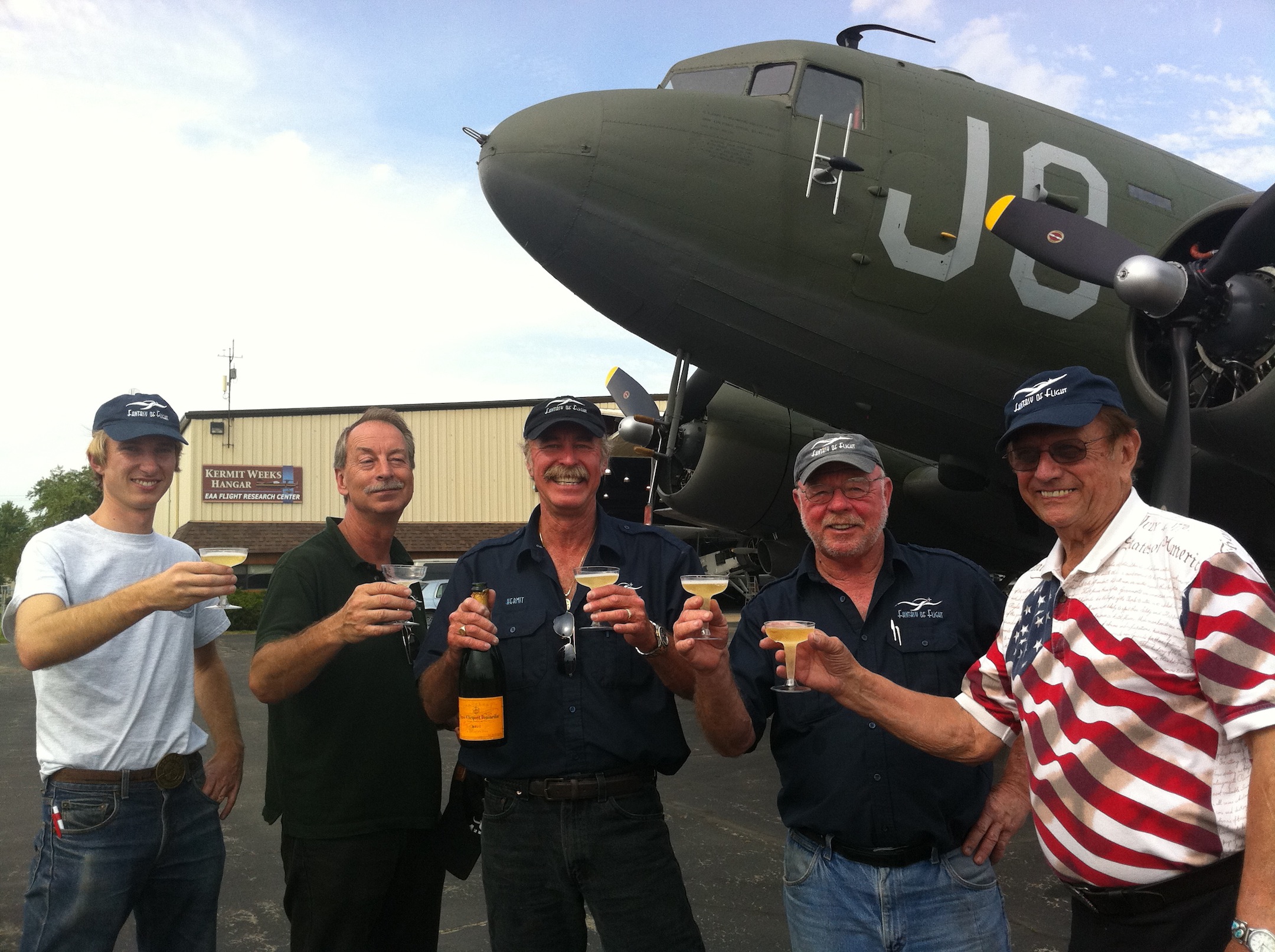
We made it!
The next day we unpacked the plane, defueled it, and towed it over to the EAA Museum. We had missed making the Oshkosh Fly-In by four days and there were still a lot of things to weave around to get there.
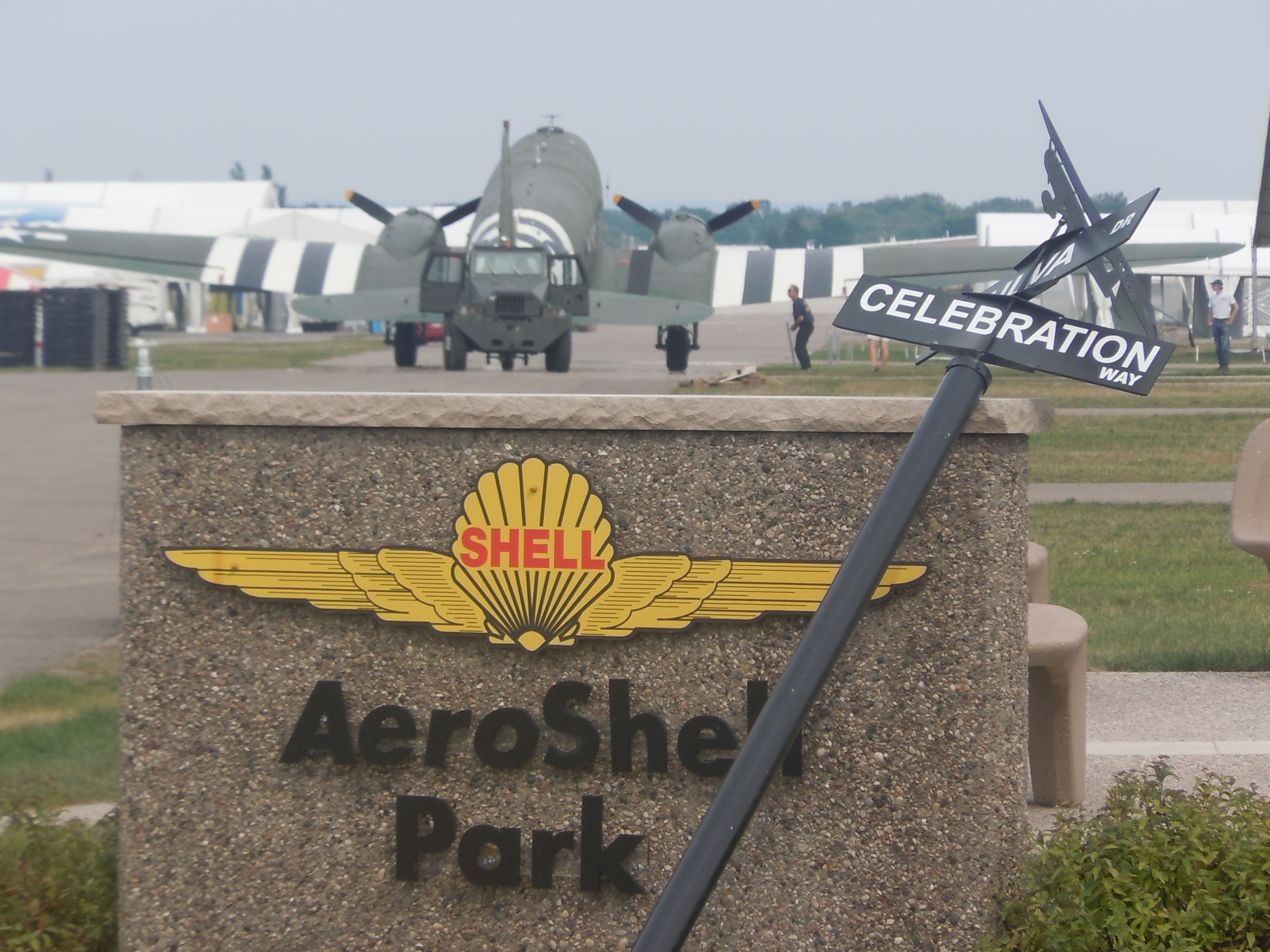
Towing her over to the Museum!
The plan is to leave the plane at the Museum, hopefully no later than next spring, until we can sort out making some room for it inside at Fantasy of Flight. I hope to have a new storage facility built by then so we can thin out the hangars and make it happen.
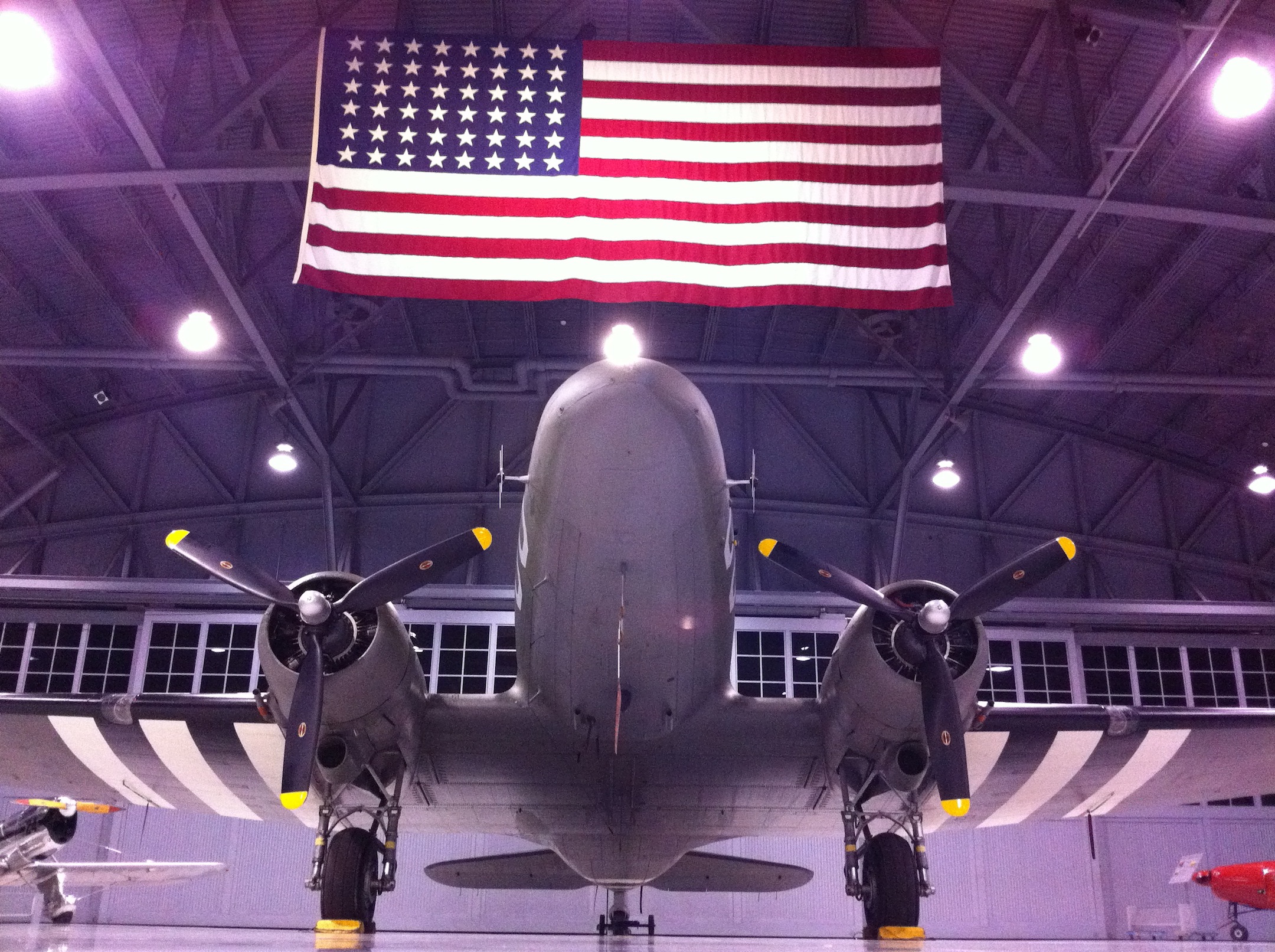
Mission Accomplished!
After my unbelievably fun trip to New Zealand in April, I had no idea in May that this adventure was in my future. The trip was now over and we had put the airplane is a safe place where many people could visit and admire her. We were happy we’d made it . . . but were also now sad it was actually over. It was fun, albeit with some anxiety at times, but most of all . . . it was a most memorable trip we will never forget!
In total, the trip comprised of 33 hours flying over 12 days and 4500 miles! And while I’m glad that I got a great deal on the plane . . . I’m not so sure I really want to know what the trip cost me!
Kermit
